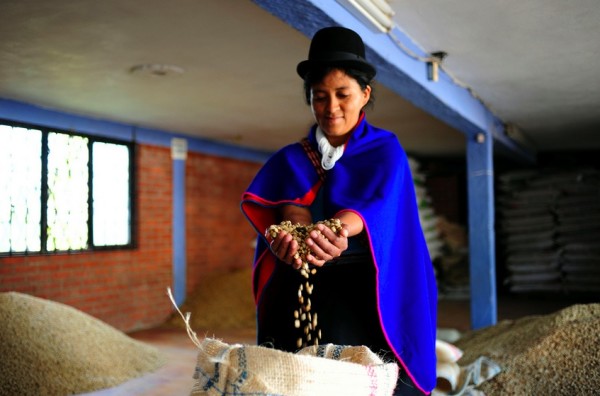Based on its new study, the Rainforest Alliance is suggesting that certified smallholder farms have far better access to bank loans than non-certified smallholder farms.
To be clear, Rainforest Alliance is confusing the issue. The study itself suggests access to capital is influenced largely by ability of farmers to maintain comprehensive financial records and crop monitoring practices — pieces that are often part of the certification process, but which can also be done independently. In this way, the Rainforest Alliance may shed some light for smallholder farmers on how to improve their chances at the bank, certification or not.
“The economic and environmental stakes of widening farms’ credit access are high,” Michelle Buckles, director of Sustainable Finance at the Rainforest Alliance, correctly said in response to the study. “The agriculture sector needs capital to make sustainability improvements and improve farmer incomes, and millions of smallholder farmers need loans.”
Related Reading
Column: Central America’s Smallholder Farms Too Reliant on Coffee Income
Researchers Quantify Bird-Friendly Habitat Near Borer-Infested Farms
The study, funded by banking giant Citi Group, involved in-depth surveys of 110 smallholder coffee and cocoa producers in Colombia and Peru, 63 of which are Rainforest Alliance Certified. It examined bookkeeping practices as well as loan history information. Rainforest Alliance also surveyed social finance and metric organizations, as well as local banking institutions in Colombia and Peru.
It found that many non-certified farmers incidentally were not working with Rainforest Alliance kept financial and crop records loosely on notepads. Conversely, the training required in the RA-certification process made some smallholder farmers far more attractive candidates to local banks. From Rainforest Alliance’s analysis of the study:
Small farmers typically record information related to crop production, volume and sales prices, but the study suggests they can dramatically improve their credit access by collecting more data on production cost, income and delivery history. Ninety percent of certified producers surveyed track both revenue and expense metrics for their farms, while only about 30 percent of non-certified producers do so. Certified producers were found to be better equipped to complete credit applications on their own than non-certified producers. The average dollar value of the loans to certified producers was $5,562, compared with $3,311 for non-certified ones. Certified producers received 1.36 loans on average each year, compared with 0.66 for non-certified ones. Certified farms surveyed therefore received on average nearly 3.5 times the credit the non-certified ones did.
One of the most interesting bits of the study was the analysis of an older study from the global investment firm Dalberg Development Advisors, which tracked loan types by market segment in Colombia and Peru:
Global demand for loans by the 250 million smallholders that sell their products is estimated at nearly $500 billion, yet less than $400 million was disbursed by social lenders in 2011, according to a study by Dalberg Development Advisors. In Colombia, agriculture is 10–14 percent of GDP and 40 percent of exports, but it receives less than 4 percent of all loans nationally. In Peru, agriculture is 6.4 percent of GDP and 7 percent of exports, but it receives only 3 percent of loans.
The full Rainforest Alliance study: “Farmer Bankability and Sustainable Finance: Farm-level Metrics that Matter”
Nick Brown
Nick Brown is the editor of Daily Coffee News by Roast Magazine.
Comment
1 Comment
Comments are closed.







Just posted on this today as well!